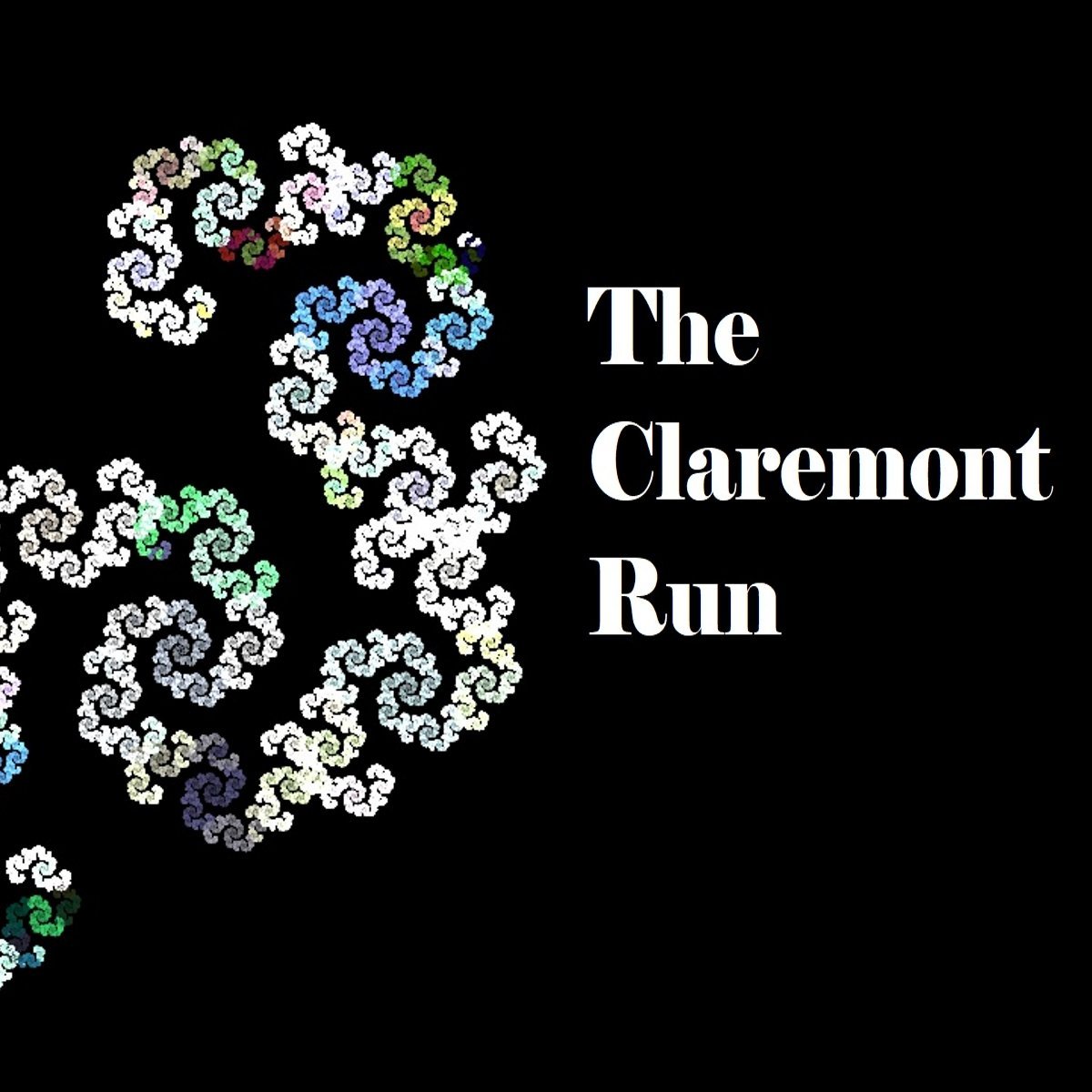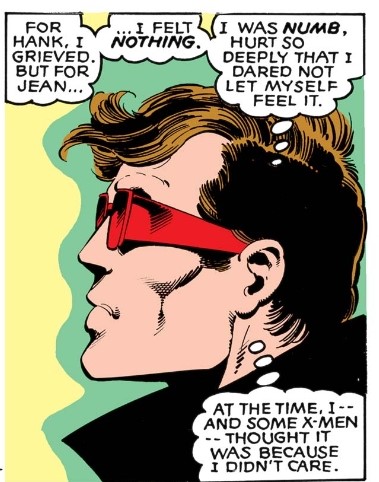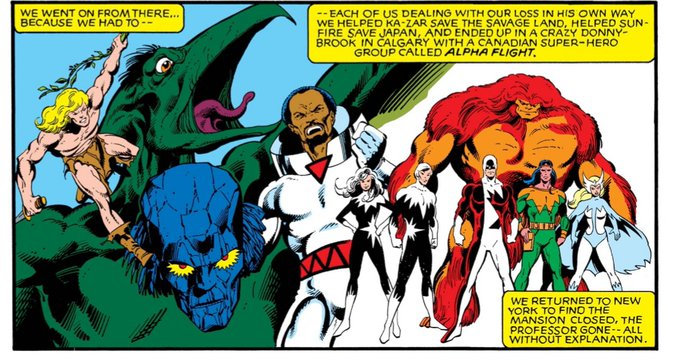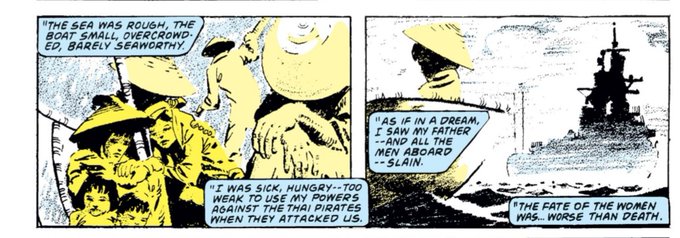And therein lies the cruelty. Ororo obviously isn’t going to put her happiness above the lives of her teammates, but Claremont raises the stakes a bit, offering Ororo not just happiness, but a competing obligation: a world of peace, tranquility AND her happiness. 8/11
Despite Forge being literally the last man on earth AND the man she loves, Ororo leaves him. “You ask for a trust I will not give. I have paths yet to walk, Forge. Answers to find about this world, about myself. It is a quest I must undertake alone.” 6/11
Importantly, despite the challenge in identifying the beginning of the DPS story, issue 138 is perhaps the most distinctive “ending” in the run, featuring nostalgic reflection, a funeral, and the departure of the central character, just as a new beginning is promised. 11/12
From there, the X-Men are attacked on two fronts: Piotr, Ororo, Logan (and Kitty) are captured by the White Queen, while Mastermind manipulates Jean’s conscious and subconscious mind in order to turn her to his side. 4/12
Building on yesterday’s thread, we can see Claremont’s plot approach of chaining together sequences of conflicts evolve further during the Dark Phoenix Saga, which chains the conflicts around a more singular, overarching umbrella conflict. #xmen 1/12
Claremont’s work is famous for his cultivation of long, continuous storylines and one of the earliest strategies we can identify toward this is his practice of chaining together conflicts in direct succession in order to form a (moderately) continuous narrative. #xmen 1/11
Though Xi’an and her younger siblings made the trip, their parents did not, and Xi’an was subjected to sexual assault at the hands of pirates (another point connected to historical accuracy). In all of this, Claremont uses Xi’an to humanize a massive humanitarian crisis. 4/6
The combined effect is, of course, shock and awe beyond the reader’s comprehension, but that is what the X-Men themselves experience and thus the audience is situated very much in their perspective, creating a relatable viewpoint that helps sell the entire story. 11/11
This might seem contradictory for a book that has more than one genocide under its belt, but this is where execution becomes paramount over content alone. The violence is depicted in scenes here that would normally not be shown on-panel. That’s important. 7/11
The villains are a (mostly) unknown entity. Their arrival is barely foreshadowed and they aren’t even seen, except in silhouette, until it’s already far too late to stop the massacre from occurring. 3/11











